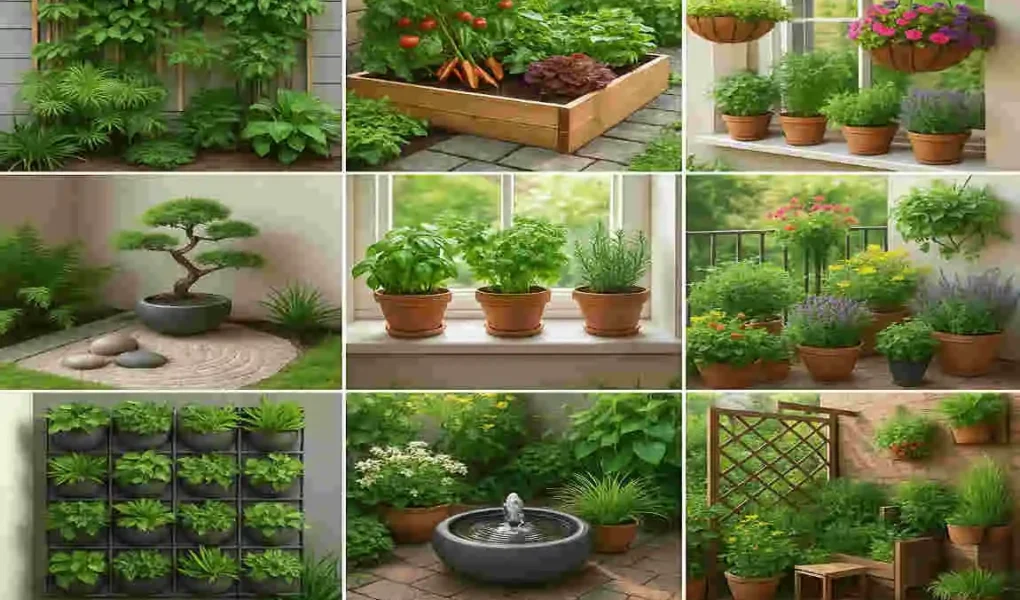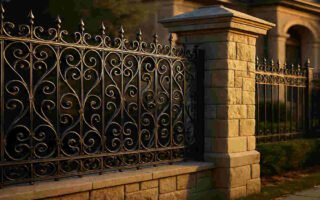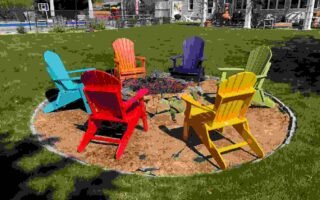Indoor gardening has become increasingly popular, especially for those living in urban areas or with limited outdoor space. The appeal of bringing nature inside your home is undeniable, but choosing the right house indoor garden system can be a daunting task.
Whether you’re a seasoned gardener or a beginner looking to add some greenery to your home, we’ve got you covered. From vertical wall gardens to innovative indoor systems, we’ll delve into the benefits, setup tips, and best plant choices for each idea.
Understanding Indoor Garden Systems
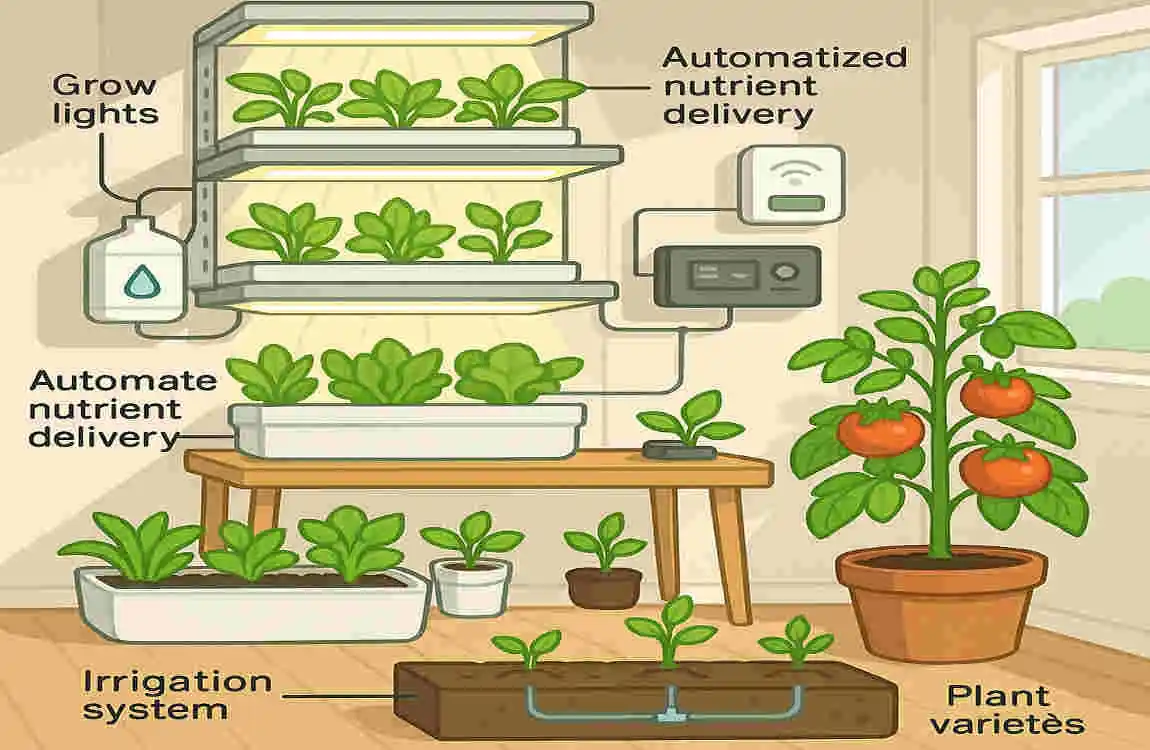
Before we jump into the creative ideas, let’s take a moment to understand what indoor garden systems are and how they can benefit your small space.
Indoor garden systems come in various types, including hydroponic, soil-based, and vertical gardens. Each system has its own unique advantages and considerations. Hydroponic systems, for example, allow you to grow plants without soil, using nutrient-rich water instead. This can be a great space-saving solution, as you can stack multiple levels of plants vertically.
Soil-based systems, on the other hand, mimic traditional outdoor gardening but on a smaller scale. These systems are often more affordable and easier to set up, making them a popular choice for beginners.
Vertical gardens, as the name suggests, utilise vertical space to grow plants. These systems can be mounted on walls or placed on shelves, making them ideal for small spaces where floor space is limited.
So, what are the benefits of indoor garden systems for small spaces? For starters, they can help you maximise your available space, allowing you to grow more plants in a smaller area. Indoor gardens also contribute to improved air quality, as plants absorb carbon dioxide and release oxygen. Plus, they add a touch of nature and beauty to your home, creating a calming and inviting atmosphere.
When it comes to assessing what is the best indoor garden system for your specific small space needs, consider factors such as the amount of available light, your budget, and the types of plants you want to grow. We’ll explore these factors in more detail later in the article, but for now,
10 Creative House Garden Ideas for Small Spaces
Vertical Wall Gardens
Vertical wall gardens are a fantastic way to make the most of your small space. By utilising your wall space, you can create a stunning living wall that not only looks beautiful but also helps to purify the air in your home.
The benefits of vertical gardens are numerous. They save floor space, allowing you to grow more plants in a smaller area. They also add a unique and eye-catching element to your decor, making them a great conversation starter.
When it comes to choosing plants for your vertical garden, consider low-maintenance options like succulents, ferns, and air plants. These plants thrive in the conditions typically found in indoor environments and require minimal care.
Setting up a vertical garden is relatively simple. You can purchase pre-made vertical garden systems or create your own using a variety of materials like felt, plastic, or metal. Make sure to choose a location that receives adequate light and has easy access for watering and maintenance.
Vertical gardens are an excellent answer to the question, “What is the best indoor garden system?” for space maximisation. They allow you to grow a large number of plants in a small area, making them perfect for those with limited space.
Hanging Planters and Pots
Hanging planters and pots are another creative way to add greenery to your small space. By suspending your plants from the ceiling or wall, you can free up valuable floor space and create a lush, jungle-like atmosphere.
There are countless styles of hanging planters available, from macrame hangers to sleek metal designs. Choose a style that complements your decor and fits your space.
You may also read (benefits of installing paver patios in your home backyard).
When selecting plants for your hanging garden, opt for trailing varieties like pothos, ivy, or spider plants. These plants will cascade down from their pots, creating a beautiful and lush display.
The space-saving advantages of hanging gardens are clear. By utilising vertical space, you can add more plants to your home without cluttering up your floors or surfaces. Hanging planters make an excellent choice for small rooms or apartments.
Window Sill Herb Gardens
If you love cooking with fresh herbs, a windowsill herb garden is the perfect solution for your small space. By placing your herbs on a sunny windowsill, you can easily access them while cooking and enjoy the benefits of fresh, homegrown flavours.
Some of the easiest herbs to grow indoors include basil, parsley, mint, and thyme. These herbs require minimal care and can thrive in the conditions typically found on a windowsill.
When setting up your windowsill herb garden, make sure to choose a location that receives at least 6 hours of direct sunlight per day. Water your herbs regularly, but be careful not to overwater, as this can lead to root rot.
The compact design of window sill herb gardens makes them an ideal choice for small spaces. You can use a variety of containers, from traditional pots to repurposed jars or tins, to create a charming and functional display.
Modular Stackable Planters
Modular stackable planters are a versatile and space-saving solution for small indoor gardens. These systems allow you to stack multiple levels of planters on top of each other, maximising your vertical space and enabling you to grow more plants in a smaller area.
Modular systems come in a variety of styles and materials, from plastic to ceramic. Choose a system that fits your space and aesthetic preferences.
When selecting plants for your stackable planters, consider compact varieties, such as herbs, lettuce, or small flowering plants. These plants will thrive in the limited space provided by the planters and can be easily harvested or enjoyed.
Stackable planters are strong contenders for the title of “best indoor garden system” due to their space-saving design and versatility. They allow you to customise your garden to fit your specific needs and can be easily expanded or rearranged as your plant collection grows.
Terrariums and Glass Planters
Terrariums and glass planters are a beautiful and low-maintenance way to add greenery to your small space. These enclosed ecosystems create a humid environment that is perfect for certain types of plants, making them an excellent choice for those with limited space or time for gardening.
The aesthetic appeal of terrariums is undeniable. They create a miniature world within your home, adding a touch of whimsy and charm to your decor.
When choosing plants for your terrarium, opt for small, slow-growing varieties like ferns, mosses, or air plants. These plants thrive in the humid conditions found inside a terrarium and require minimal care.
To set up your terrarium, start with a layer of pebbles or gravel for drainage, followed by a layer of activated charcoal to keep the soil fresh. Add a layer of potting soil and then arrange your plants, being careful not to overcrowd the space. Water your terrarium sparingly, as the enclosed environment will help to retain moisture.
Terrariums are a creative and space-saving solution for small indoor gardens. They allow you to enjoy the beauty of nature without taking up valuable floor space, making them an excellent choice for those with limited room.
Repurposed Furniture Garden
If you’re looking for a unique and eco-friendly way to add greenery to your small space, consider repurposing old furniture into a garden bed. By using shelves, drawers, or other pieces of furniture, you can create a one-of-a-kind indoor garden that adds charm and character to your home.
There are countless DIY ideas for repurposed furniture gardens. You can turn an old bookshelf into a vertical garden, use a vintage dresser as a planter, or even transform a wooden ladder into a plant display.
When setting up your repurposed furniture garden, make sure to choose a location that receives adequate light and has easy access for watering and maintenance. Use a well-draining potting mix and select plants that thrive in the conditions found in your home.
Repurposed furniture gardens add a unique and charming element to small spaces. They allow you to showcase your creativity and personality while also enjoying the benefits of indoor gardening.
Indoor Hydroponic Gardens
Hydroponic gardens are a highly efficient and space-saving solution for indoor gardening. These systems allow you to grow plants without soil, using nutrient-rich water instead. This can be a game-changer for those with limited space, as hydroponic systems can be stacked vertically to maximise your growing area.
Hydroponics offer numerous benefits for small-space gardening. They use less water than traditional soil-based systems, and the plants tend to grow faster and produce higher yields. Plus, hydroponic systems are relatively low-maintenance, making them an excellent choice for busy gardeners.
There are several popular small-space hydroponic garden systems on the market, ranging from simple DIY setups to more advanced, automated systems. Choose a system that fits your space, budget, and gardening goals.
Hydroponic gardens often answer the question, “What is the best indoor garden system?” for efficiency. They allow you to grow a large number of plants in a small area and can be easily customised to fit your specific needs.
Windowsill Greenhouses
Windowsill greenhouses are a compact and efficient way to enjoy year-round gardening in your small space. These mini-greenhouses fit perfectly on a sunny windowsill and provide the perfect environment for starting seeds or growing small plants.
The benefits of windowsill greenhouses are numerous. They allow you to extend your growing season, protect your plants from harsh weather conditions, and create a humid environment that is ideal for certain types of plants.
When setting up your windowsill greenhouse, choose a location that receives at least 6 hours of direct sunlight per day. Use a well-draining potting mix and select plants that thrive in the conditions found in your home.
Some ideal plants for small greenhouse systems include herbs, lettuce, and small flowering plants. These plants will thrive in the humid environment provided by the greenhouse and can be easily harvested or enjoyed.
Plant Ladder Shelves
Plant ladder shelves are a stylish and functional way to add greenery to your small space. These shelves allow you to display your plants vertically, maximising your available space and creating a beautiful and eye-catching display.
When choosing a plant ladder, consider the size and style of your space. There are countless options available, from rustic wooden ladders to sleek and modern metal designs. Choose a ladder that complements your decor and fits your available space.
When selecting plants for your ladder shelf, consider a variety of sizes and textures to create visual interest. Trailing plants like pothos or ivy can be placed on the higher shelves, while larger plants like ferns or palms can be placed on the lower shelves.
Plant ladder shelves are an excellent way to optimise vertical space in your small indoor garden. They allow you to display a large number of plants in a small area, creating a lush and inviting atmosphere.
Smart Indoor Garden Systems
For the tech-savvy gardener, innovative indoor garden systems offer a convenient and efficient way to grow plants in small spaces. These systems use advanced technology to automate watering, lighting, and other aspects of plant care, making them an excellent choice for those with busy lifestyles or limited gardening experience.
The advantages of innovative indoor garden systems are numerous. They allow you to grow plants with minimal effort, as the system takes care of the hard work for you. Plus, many innovative systems come with app-based controls, allowing you to monitor and adjust your garden from anywhere.
When choosing an intelligent indoor garden system, consider features like automated watering, adjustable lighting, and compatibility with your smartphone or other devices. Some popular systems on the market include the Click & Grow Smart Garden, the AeroGarden, and the iDOO Hydroponic Growing System.
Innovative indoor garden systems are an excellent answer to the question, “What is the best indoor garden system?” for tech-savvy gardeners. They allow you to enjoy the benefits of indoor gardening without the hassle of daily maintenance, making them an ideal choice for those with limited time or experience.
How to Choose the Best Indoor Garden System for Your Small Space
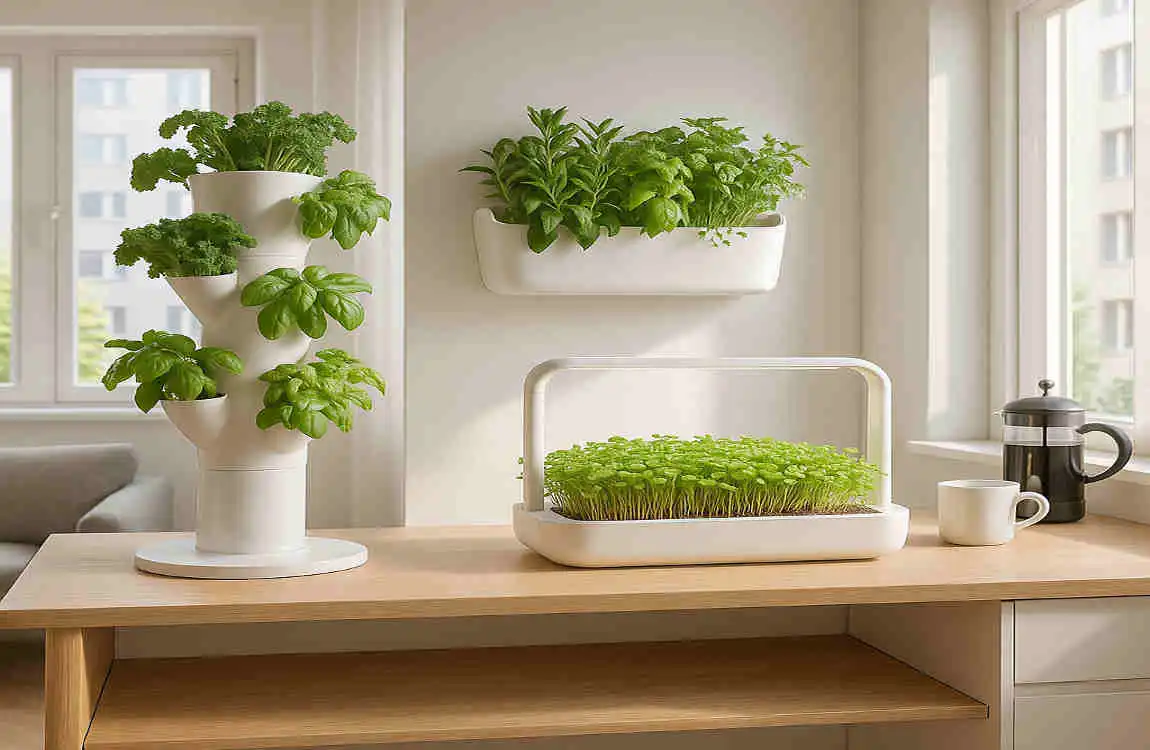
Now that we’ve explored 10 creative house garden ideas for small spaces, let’s take a moment to discuss how to choose the best indoor garden system for your specific needs.
When selecting an indoor garden system, consider factors such as the size of your space, the amount of available light, the types of plants you want to grow, your budget, and your level of maintenance. Each of these factors will play a role in determining which system is right for you.
For example, if you have limited floor space but plenty of wall space, a vertical garden system may be the best choice. If you have a sunny windowsill and want to grow herbs, a windowsill herb garden could be the perfect solution.
It’s also important to consider your lifestyle and gardening goals. If you have a busy schedule and limited time for plant care, a low-maintenance system like a terrarium or smart indoor garden may be the way to go. If you enjoy the process of gardening and want to be more hands-on, a soil-based system or hydroponic setup could be a better fit.
Ultimately, the best indoor garden system for your small space will depend on your individual needs and preferences. Take the time to assess your space and goals, and don’t be afraid to experiment with different systems until you find the one that works best for you.
Tips for Maintaining Your Indoor Garden in Small Spaces
Once you’ve chosen the best indoor garden system for your small space, it’s essential to know how to care for your plants properly. Here are some tips for maintaining your indoor garden:
- Daily care and watering schedules: Most indoor plants require regular watering, but be careful not to overwater, as this can lead to root rot. Check the soil moisture daily and water only when the top inch of soil feels dry to the touch.
- Managing pests and diseases: Indoor gardens can be susceptible to pests and diseases, especially in limited spaces. Keep an eye out for signs of infestation, such as yellowing leaves or sticky residue, and take action quickly to prevent the problem from spreading. Use natural remedies like neem oil or insecticidal soap to treat pests, and remove any diseased plant material to prevent the spread of disease.
- Lighting and ventilation: Adequate light and air circulation are crucial for healthy plant growth. Place your indoor garden in a location that receives plenty of natural light, or supplement with grow lights if necessary. Make sure to provide good air circulation by using a fan or opening windows regularly.
- Helpful tools and accessories: There are countless tools and accessories available to help you care for your indoor garden. Invest in a good pair of pruning shears, a watering can with a narrow spout, and a moisture meter to help you keep your plants healthy and thriving.
By following these tips and staying attentive to your plants’ needs, you can enjoy a thriving indoor garden in your small space.
You may also read (why choose outdoor home chairs for your restaurants outdoor dining space).

